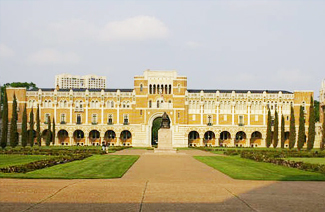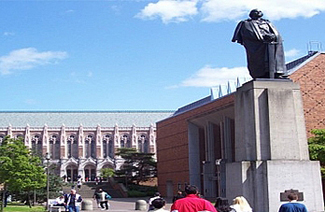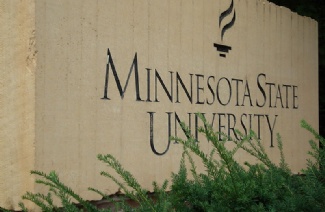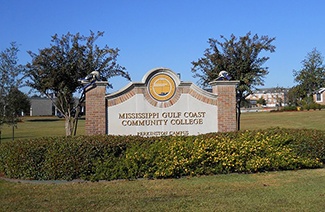很多参加GMAT考试的考生都认为GMAT阅读部分是比较耗费考生的考试时间的,小编建议大家要想提高GMAT阅读解题速度,在备考的过程中要多加练习,为了帮助大家更好的进行练习,小编为大家带来了GMAT阅读考前必做练习题【8】。
Joseph Glarthaar’s Forged in Battle is not the first excellent study of Black soldiers and their White officers in the Civil War, but it uses more soldiers’ letters and diaries—including rare material from Black soldiers—and concen (5)rates more intensely on Black-White relations in Black regiments than do any of its predecessors. Glathaar’s title expresses his thesis: loyalty, friendship, and respect among White officers and Black soldiers were fostered by the mutual dangers they faced in combat.(10 ) Glarthaar accurately describes the government’s discriminatory treatment of Black soldiers in pay, promotion, medical care, and job assignments, appropriately emphasizing the campaign by Black soldiers and their officersto get the opportunity to fight. That chance remained limited through(15)out the war by army policies that kept most Black units serving in rear-echelon assignments and working in labor battalions. Thus, while their combat death rate was only one-third that of White units, their mortality rate from disease, a major killer in his war, was twice as great.(20) Despite these obstacles, the courage and effectiveness of several Black units in combat won increasingrespect from initially skeptical or hostile White soldiers. Asone White officer put it, “they have fought their way into the respect of all the army.”(25)
In trying to demonstrate the magnitude of this attitudinal change, however, Glarthaar seems to exaggerate the prewar racism of the White men who became officers in Black regiments. “Prior to the war,” he writes of these men, “virtually all of them held powerful racial prejudices.”(30)
While perhaps true of those officers who joined Black units for promotion or other self-serving motives, this statement misrepresents the attitudes of the many abolitionists who became officers in Black regiments. Having spent years fighting against the race prejudice endemic in Ameri-(35)can society; they participated eagerly in this military experiment, which they hoped would help African Americans achieve freedom and postwar civil equality. By current standards of racial egalitarianism, these men’s paternalism toward African Americans was racist. But to call their (40) feelings “powerful racial prejudices” is to indulge in generational chauvinism—to judge past eras by present standards.
1. The passage as a whole can best be characterized as which of the following?
(A) An evaluation of a scholarly study
(B) A description of an attitudinal change
(C) A discussion of an analytical defect
(D) An analysis of the causes of a phenomenon
(E) An argument in favor of revising a view
2. According to the author, which of the following is true of Glarthaar’s Forged in Battle compared with previous studies on the same topic?
(A) It is more reliable and presents a more complete picture of the historical events on which it concentrates than do previous studies.
(B) It uses more of a particular kind of source material and focuses more closely on a particular aspect of the topic than do previous studies.
(C) It contains some unsupported generalizations, but it rightly emphasizes a theme ignored by most previous studies.
(D) It surpasses previous studies on the same topic in that it accurately describes conditions often neglected by those studies.
(E) It makes skillful use of supporting evidence to illustrate a subtle trend that previous studies have failed to detect.
3. The author implies that the title of Glatthaar’s book refers specifically to which of the following?
(A) The sense of pride and accomplishment that Black soldiers increasingly felt as a result of their Civil War experiences
(B) The civil equality that African Americans achieved after the Civil War, partly as a result of their use of organizational skills honed by combat
(C) The changes in discriminatory army policies that were made as a direct result of the performance of Black combat units during the Civil War
(D) The improved interracial relations that were formed by the races’ facing of common dangers and their waging of a common fight during the Civil War
(E) The standards of racial egalitarianism that came to be adopted as a result of White Civil War veterans’ repudiation of the previous racism
4. The passage mentions which of the following as an important theme that receives special emphasis in Glarthaar’s book?
(A) The attitudes of abolitionist officers in Black units
(B) The struggle of Black units to get combat assignments
(C) The consequences of the poor medical care received by Black soldiers
(D) The motives of officers serving in Black units
(E) The discrimination that Black soldiers faced when trying for promotions
5. The passage suggests that which of the following was true of Black units’ disease mortality rates in the Civil War?
(A) They were almost as high as the combat mortality rates of White units.
(B) They resulted in part from the relative inexperience of these units when in combat.
(C) They were especially high because of the nature of these units’ usual duty assignments.
(D) They resulted in extremely high overall casualty rates in Black combat units.
(E) They exacerbated the morale problems that were caused by the army’s discriminatory policies.
6. The author of the passage quotes the White officer in lines 23-24 primarily in order to provide evidence to support the contention that
(A) virtually all White officers initially had hostile attitudes toward Black soldiers
(B) Black soldiers were often forced to defend themselves from physical attacks initiated by soldiers from White units
(C) the combat performance of Black units changed the attitudes of White soldiers toward Black soldiers
(D) White units paid especially careful attention to the performance of Black units in battle
(E) respect in the army as a whole was accorded only to those units, whether Black or White, that performed well in battle
7. Which of the following best describes the kind of error attributed to Glarthaar in lines 25-28?
(A) Insisting on an unwarranted distinction between two groups of individuals in order to render an argument concerning them internally consistent
(B) Supporting an argument in favor of a given interpretation of a situation with evidence that is not particularly relevant to the situation
(C) Presenting a distorted view of the motives of certain individuals in order to provide grounds for a negative evaluation of their actions
(D) Describing the conditions prevailing before a given event in such a way that the contrast with those prevailing after the event appears more striking than it actually is
(E) Asserting that a given event is caused by another event merely because the other event occurred before the given event occurred
8. Which of the following actions can best be described as indulging in “generational chauvinism” (lines 40-41) as that practice is defined in the passage?
(A) Condemning a present-day monarch merely because many monarchs have been tyrannical in the past.
(B) Clinging to the formal standards of politeness common in one’s youth to such a degree that any relaxation of those standards is intolerable
(C) Questioning the accuracy of a report written by an employee merely because of the employee’s gender.
(D) Deriding the superstitions accepted as “science” in past eras without acknowledging the prevalence of irrational beliefs today.
(E) Labeling a nineteenth-century politician as “corrupt” for engaging in once-acceptable practices considered intolerable today.

















